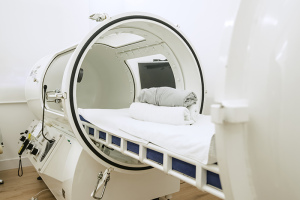New resource helps facilities recover from COVID-19 pandemic
The American Society for Health Care Engineering (ASHE) has created a new COVID-19 recovery resource free and open to the public to help health care facilities develop plans to resume operations post-surge. The free resource can be accessed at ashe.org/covid-19-recovery.
According to Jonathan Flannery, MHSA, CHFM, FASHE, FACHE, senior associate director of advocacy at ASHE, the COVID-19 pandemic has had a disparate impact on hospitals across the nation, which means that the timing and types of recovery will be just as wide ranging.
“It’s really all over the board,” Flannery said as of press time in Mid-May. “New York is coming down but still has a very heavy workload. Chicago and northern Illinois are in the thick of it, and Florida seems to be further along in recovery than New York.
“The state of Washington is actually getting back to elective surgeries, and here in Arkansas we’re encouraging people to get back to normal health care,” Flannery continues
The COVID-19 Recovery resource page specifically addresses facilities management issues, such as assessing inspections, testing and maintenance that were deferred as a result of the pandemic. It then walks through recovery needs: pre-recovery planning, immediate needs, short-term needs, long-term needs and operating in the new normal.
The resource also includes a checklist that facilities managers can use as they document the various changes and deferrals that were made during the surge, and iron out an action plan on how to move forward.
Flannery led a multidisciplinary team comprised of facilities managers, code compliance experts, design engineers and more to develop the resource. Frank D. Rudilosso, PE, M. Eng., CHSP, director of facilities organizational readiness at NewYork-Presbyterian Hospital, worked specifically on the immediate needs steps, which dovetailed with what he was experiencing in real time at his facility.
“We had up to 2,500 patients at one time, but as we’re starting to come down from the rush of building field sites and surge spaces, and entering the point where no new requests for additional surge spaces were coming in, we started thinking we may be able to slowly reopen some spaces,” Rudilosso says. “So, in putting this recovery plan together, I was able to take what we were doing and include that and lessons learned in the document.”
The resource was created with flexibility in mind, so that individual facilities or systems can apply it to their specific operations. For instance, in pre-planning, creating a list of deferred maintenance will help hospitals determine the workload necessary to ramp up those services during the later recovery stages.
Pier-George Zanoni, PE, CIH, brought code compliance expertise to the team from various roles, including working with the state of Michigan health care plan review and inspections for the past 17 years. He says that during the state of emergency, a facility’s first goal is to protect the health of everyone involved. For instance, in temporary surge spaces where 100% compliance is not required, “a window view might not be as important as the ability to quickly convert the room to slight negative pressure,” he explains.
But as many states come over the top of a flattened curve and the state of emergency eventually ends, he says it’s also important for facilities managers to return facilities to compliance while remaining nimble for the future.
“As mentioned in the resource, it’s important to return the physical plant back into full compliance with applicable codes and other requirements as well as balancing a return to normal with being ready to quickly ramp back up if there is another COVID-19 wave,” Zanoni says.
Michael P. Sheerin, PE, LEED AP, CEO of TLC Engineering Solutions, echoes the need for facilities to determine just what “normal” will look like going forward, and says that it perhaps will require a new perspective.
“I think everybody is going to have to figure out how to integrate COVID care into normal business,” he says. “And that may be different for you than it is for me based on cases in my area. There are instances where facilities know they may need to modify spaces in the hospital or in the outpatient realm to treat those COVID-positive patients. The mindset has to allow these two worlds to exist, so that one can’t continue to supersede the other.”
Rudilosso says his health system is looking to develop standardized practices for its facilities, such as how to reorganize waiting rooms or manage elevators to allow for social distancing.
Although the crisis has presented the health care system with many challenges, Flannery believes that changes in health care, including physical environment changes, being made as a result of the COVID-19 pandemic could leave a lasting positive impact.
“I compare it to after 9/11 when air travel changed significantly,” Flannery says. “The ‘see something, say something’ effort began. It changed the way we live. And I think this pandemic will have a similar impact, and I believe for the better. Washing our hands more often than ever will not only help protect against coronavirus, but other illnesses. There’s also a better awareness on the clinical side of infection prevention and the role facilities play in it, such as the importance of the HVAC system and negative pressure rooms. As a whole, there are big lessons learned here for all of us.
“But there is still more to learn,” Flannery continues. “This is a living document, so if people have recommendations or suggestions, we encourage them to submit those to ashe@aha.org.”




